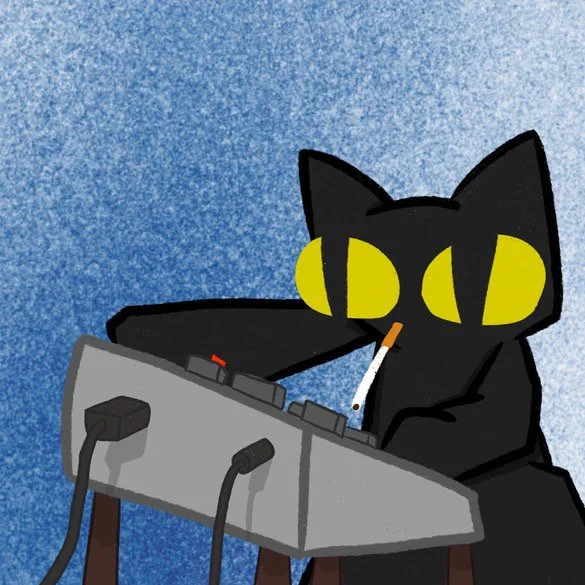Why Jazz House
Feels Like a Spiritual Reset
Katy Moncada
Jazz house is more than sound. it’s color, rhythm, and emotion. A genre that grounds you, slows you down, and resets the soul.
Jazz has always been more than just music it's a feeling, a language, a living archive of emotion and history. There’s something deeply personal about it. Even without lyrics, jazz speaks volumes. It invites you to slow down, breathe deeper, and listen.
When jazz fuses with house; deep, steady rhythms paired with melodic improvisation it becomes more than a genre. It becomes a reset. A moment to feel grounded.
There’s a sensuality in jazz house that’s hard to describe. The soft horns, loose hi-hats, upright bass and vocal samples aren’t there to impress, they’re there to move you. To me, jazz house is colorful. I see burnt orange and sun-washed yellow. I feel suede, velvet, pressed cotton. The sound has texture grainy, smooth, layered like a favorite outfit that says exactly who you are without needing to explain.
Jazz house expresses personality in a way few other genres can. It’s smooth but playful, grounded but curious. It doesn't demand attention; it seduces you into it. It has taste. It knows when to speak and when to leave space. At its core, jazz is about freedom. It was born out of resistance and expression, shaped by cultural memory and collective improvisation. It carries a legacy. So when artists sample jazz into house music, it’s not just nostalgic — it’s reverent. They’re remixing history into something new and alive.
Jazz house feels like a Sunday afternoon. Like incense in the air. Like an open window, warm light on hardwood floors, a record spinning in the background. It’s a reset not just for the ears, but for the spirit.
In a world that moves fast, jazz house moves intentionally. It reminds us to feel, not just consume. To be, not just produce. To listen, not just hear.
That’s why jazz house feels like a spiritual reset, it reconnects us to texture, rhythm, presence, and soul.
Standout artists like STRNGE, from Munich, Germany, embody the soulful intersection of jazz and deep house. With a sound rooted in rich textures and improvisational spirit, STRNGE draws inspiration from legends like Sun Ra, Miles Davis, John Coltrane, and Moodymann.
For STRNGE, jazz represents freedom a creative and improvisational tone that defies rigid structure. That free-form style becomes central to his music, allowing him to express mood, feeling, and atmosphere beyond the boundaries of genre. His work pulses with a deep, trippy groove that feels both timeless and experimental a sound that invites listeners to feel, float, and reflect.
Fyodor from Montreal Canada is blending the warmth of jazz with the groove of house to create a sonic world that’s immersive, emotional, and distinctly his own. His music feels like a glass of red wine on a Sunday afternoon, reflective, textured, and effortlessly smooth.
His journey into jazz-influenced sounds began with a collaborative moment a friend sent over a jazz house track for Fyodor to experiment with, and he admits the result was, in his words, “terrible.” But that misstep opened the door. With guidance from his friend Talmont and deep listening sessions with artists like Dublon, Chaos in the CBD, and Berlioz, Fyodor became hooked on the genre’s nuance and complexity.
Emotion, texture, and identity are foundational to his work. Fyodor isn’t just a name it’s a character, a universe, and a visual world co-created with his friend Woody, an artist. Fyodor the cat, the project’s symbolic figure, never looks the same twice a reflection of the artist’s belief in fluidity, reinvention, and the beauty of inconsistency.
“I want to build a whole universe around the music,” he says. “Something listeners can attach themselves to and be a part of.” Jazz house, for Fyodor, isn’t just a genre it’s a gateway. A doorway into a vast musical universe that he’s exploring one trippy, soulful track at a time.
Artists like STRNGE and Fyodor show us that jazz house is more than just a sound it's a space to express, to feel, to wander, and to connect. Whether through deep grooves, vivid textures, or fully built sonic worlds, this new wave of jazz house reminds us that music can still surprise us, soften us, and ground us. In their hands, the genre isn’t just evolving it’s expanding. And if you listen closely, you’ll realize jazz house isn’t just something you hear. It’s something you step into.
To keep exploring, I’ve put together a playlist featuring a range of jazz house artists from rising names like STRNGE and Fyodor to other experimental producers shaping the genre’s edges. It’s an easy way to tap into the mood and discover new favorites along the way.



